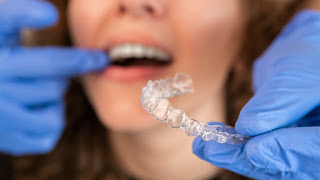Why Lips Turn Blue or Purple, Is It Serious?
Blue or purple lips can be a sign of a medical condition that requires attention, as it may indicate a lack of oxygen in the bloodstream or poor circulation. Here are a few possible causes:
1. Cyanosis: This occurs when there is a reduced amount of
oxygen in the blood. It can be caused by respiratory problems, such as asthma,
pneumonia, or chronic obstructive pulmonary disease (COPD). Cyanosis can also
result from heart conditions, such as congenital heart defects or heart
failure.
2. Raynaud's disease: This condition affects blood
circulation and causes the blood vessels in the extremities, including the
lips, to narrow or constrict when exposed to cold temperatures or stress. This
can result in blue or purple lips.
3. Hypothermia: Exposure to extreme cold temperatures can
lead to hypothermia, where the body loses heat faster than it can produce it.
This can cause the lips to turn blue or purple, along with other symptoms like
shivering, confusion, and drowsiness.
4. Methemoglobinemia: This is a condition where the blood
contains a higher level of methemoglobin, which is unable to bind oxygen
effectively. It can be a genetic condition or occur due to exposure to certain
medications or chemicals.
5. Medications or toxins: Some medications or toxins can
affect oxygenation or circulation, leading to cyanosis and blue or purple lips.
Dental care is an
essential aspect of maintaining good oral health. It involves practices and
habits that promote the health and cleanliness of your teeth, gums, and mouth.
Here are some key aspects of dental care:
1. Brushing: Brush
your teeth at least twice a day using a soft-bristled toothbrush and
fluoride toothpaste. Brushing helps remove plaque, bacteria, and food particles
from the surfaces of your teeth.
2. Flossing: Floss your teeth daily to clean the areas
between your teeth and along the gumline. This helps remove plaque and debris
that brushing alone may not reach.
3. Mouthwash: Using an antimicrobial mouthwash can help kill
bacteria and freshen your breath. However, it should not be used as a substitute
for brushing and flossing.
4. Healthy diet: Maintain a balanced diet that is rich in
fruits, vegetables, whole grains, and lean proteins. Limit your intake of
sugary foods and drinks, as they can contribute to tooth decay.
5. Regular dental check-ups: Visit your dentist for regular
check-ups and professional cleanings. Dental professionals can identify any
dental issues early on and provide appropriate treatments or preventive
measures.
6. Avoid tobacco and excessive alcohol consumption: Tobacco
use and heavy alcohol consumption can have detrimental effects on oral health,
including an increased risk of gum disease, oral cancer, and tooth loss. It's
best to avoid or minimize these habits.
7. Protect your teeth: If you participate in contact sports
or grind your teeth while sleeping, consider wearing a mouthguard or a
nightguard to protect your teeth from injury or excessive wear.
8. Oral hygiene for children: Teach and supervise children
in developing good oral hygiene habits from an early age. Encourage them to
brush their teeth properly and limit their consumption of sugary snacks and
drinks.
Remember, regular and consistent dental care practices are
crucial for preventing tooth decay, gum
disease, and other oral health problems. If you have any specific
concerns or dental issues, it's always best to consult with a dental
professional for personalized advice and treatment.

Comments
Post a Comment